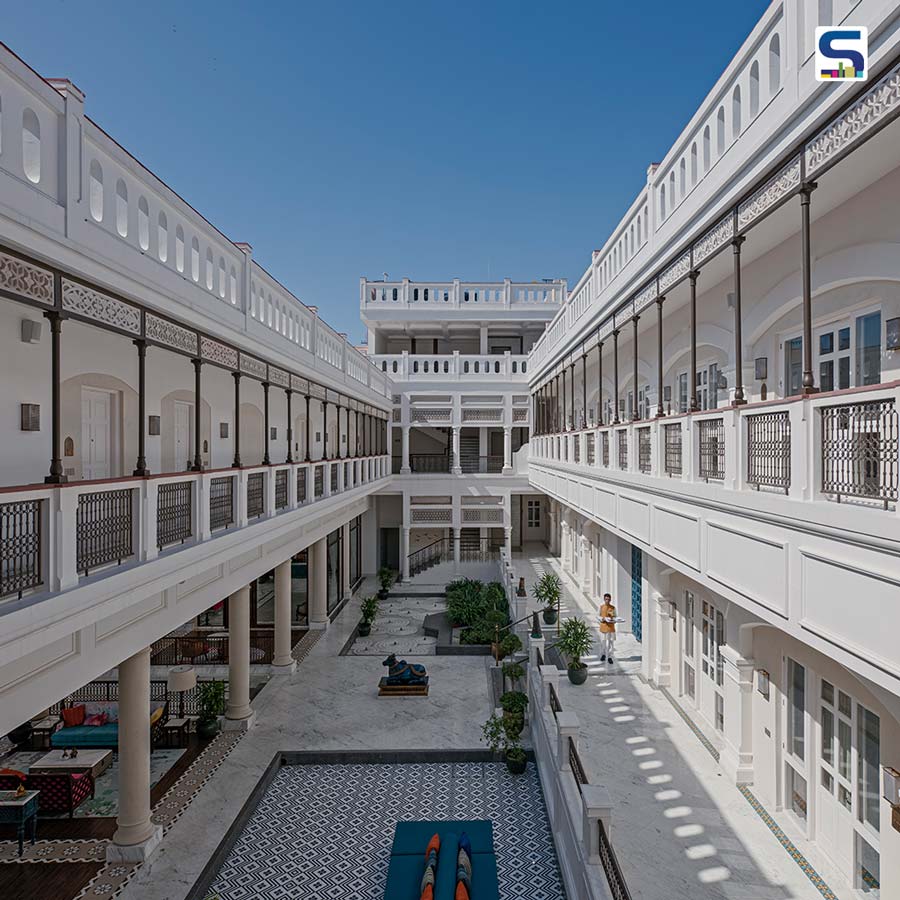
Haridwar is the city known for the strong influences of the deity Shiva, further enhanced by the presence of the river Ganga. Pilibhit House, a mesmerizing hospitality project by the Ar. Khozema Chitalwala and his creative team of Designers Group in Haridwar seek to enthrall everyone who enters the town searching for liberation (Moksha). The cultural and religious significance of Haridwar played a considerable part in the contemporary design grammar of the Pilibhit House Hotel. This vintage property, situated on the banks of the river Ganga, was owned by the descendants of the royal family of Pilibhit. Hence, it seemed regal even before it was interacted with. The original structure also possessed enigmatic grandeur and had a touch of opulence to it. The design team shared all the challenges they facade while designing along with intriguing details of the project with SURFACES REPORTER (SR). Scroll down to read:
Also Read: Take A Journey To Rajasthan Through Joshi House, A Restaurant in Mumbai | Ashiesh Shah Architecture
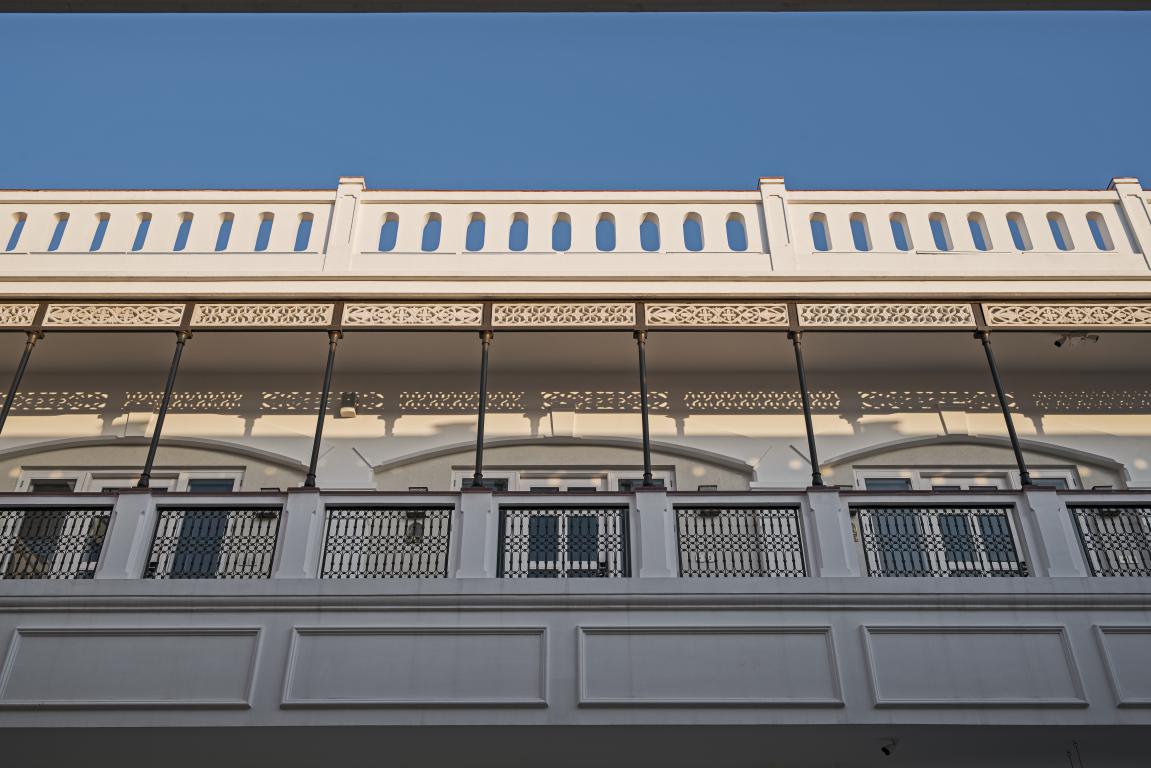 As the project was assigned to the Designers Group in June 2020, a time when the lockdown was strictly implemented due to the COVID-19 pandemic, the team faced a crucial challenge. They had to design without making in-person site visits and by taking virtual tours of the assigned project while it was under construction.
As the project was assigned to the Designers Group in June 2020, a time when the lockdown was strictly implemented due to the COVID-19 pandemic, the team faced a crucial challenge. They had to design without making in-person site visits and by taking virtual tours of the assigned project while it was under construction.
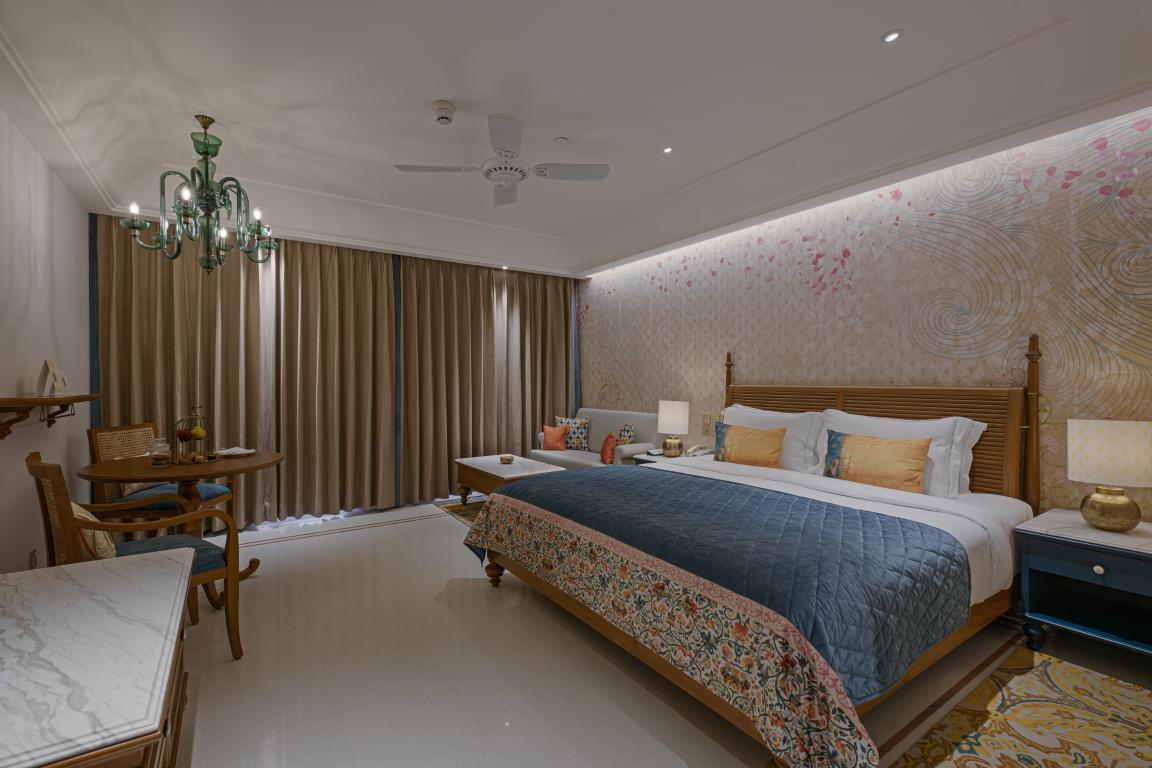
The Haveli houses many rooms of different sizes and views, all luxuriously designed as suites with contemporary design grammar. The wallpaper on the headboard talks a million stories symbolizing the divergent nature of the Hindu religion. The room maintains a contemporary vibe, with the prominent colour being teal.
A Confluence of Varied Indian Culture and Civilizations
The project is a kaleidoscope of cultural influences and civilizations, an idea demonstrated by the holy city of Haridwar, where people from all over come to attain Moksha.
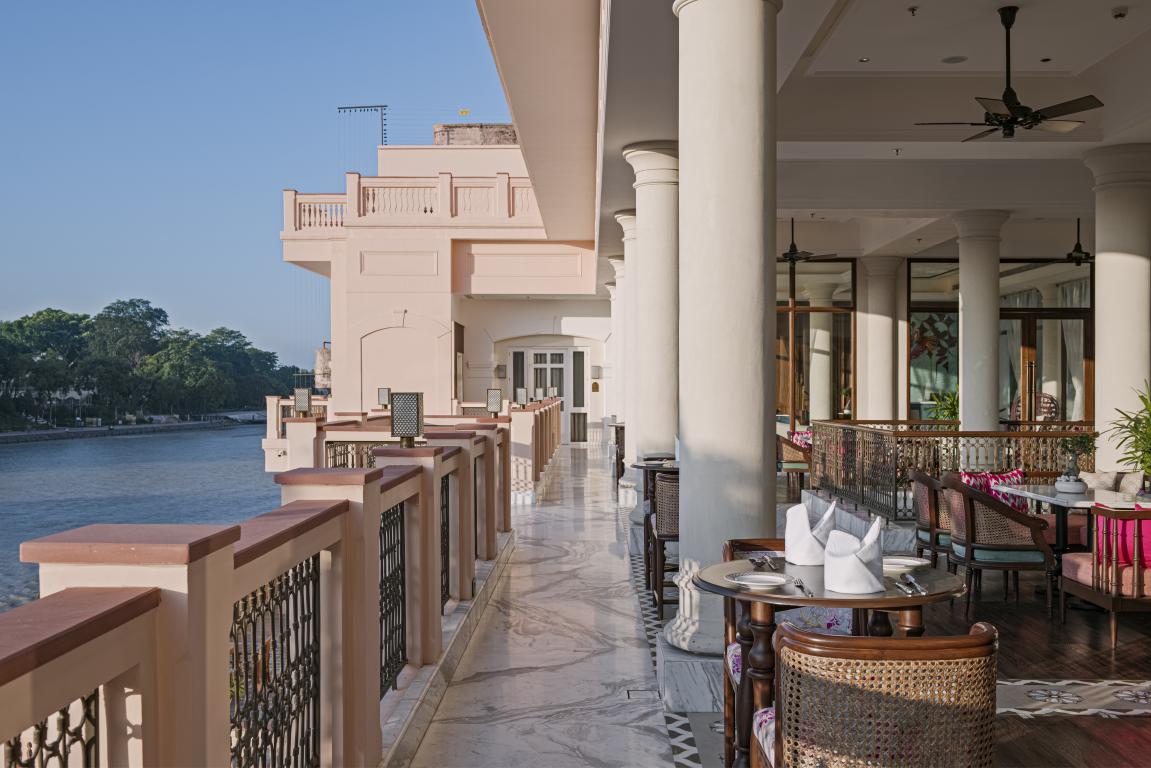
The first thing that impressed the entire team was the beauty of the location and the scenic view of the Ganga. Haridwar as a city is an experience of the best of Hindu culture and heritage.
Four Phases of Life Influences Project's Design Grammar
The design was conceptualized by highlighting the four phases of life or Purusharth as per Hindu Philosophy, i.e., Dharma (righteousness); Artha (prosperity); Kama (pleasure, love); and Moksha translated into a contemporary setting. Multiple design influences were incorporated as a homage to Lord Shiva and the gateway for Chardham Yatra.
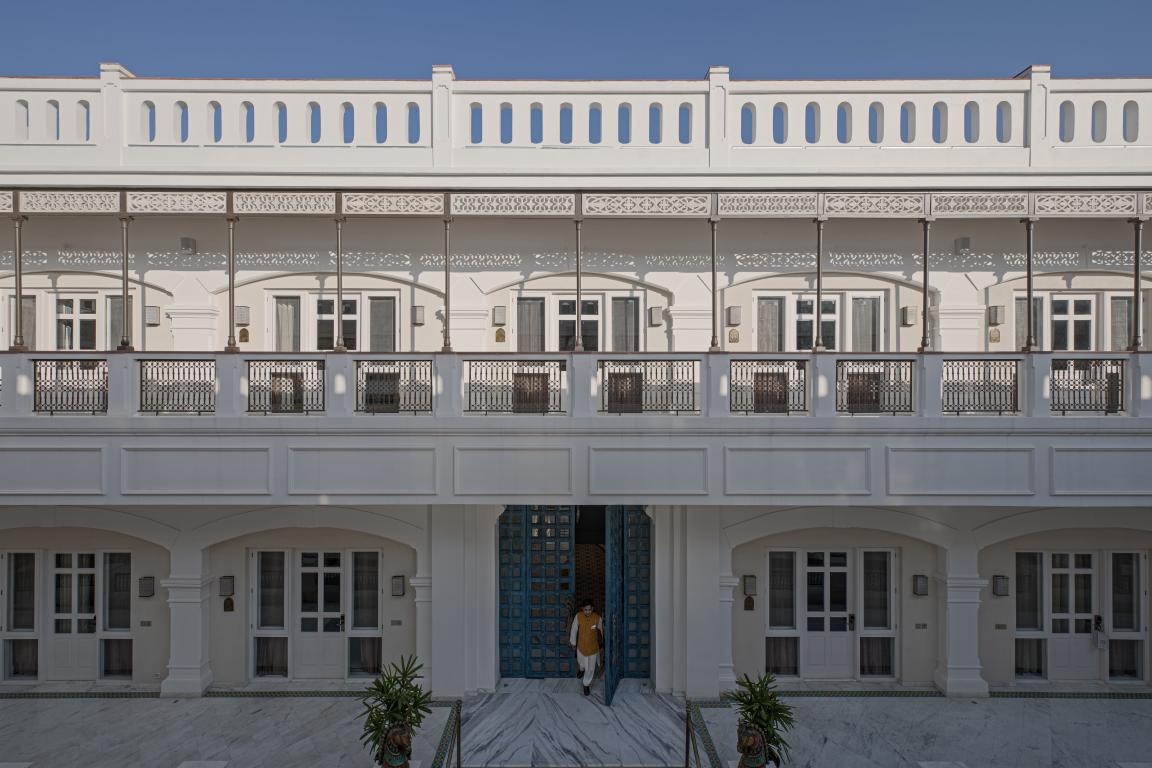 The design of this hotel seamlessly puts forth Indian culture in a modern design tone, showcasing the traditional schematic approach and rich temple colour palette. The cultural and spiritual significance of Haridwar plays a considerable part in the contemporary design grammar of the Pilibhit House by IHCL SeleQtions.
The design of this hotel seamlessly puts forth Indian culture in a modern design tone, showcasing the traditional schematic approach and rich temple colour palette. The cultural and spiritual significance of Haridwar plays a considerable part in the contemporary design grammar of the Pilibhit House by IHCL SeleQtions.
Also Read: The Open Plan With An Interesting Play of Materials Suffuse A Sense of Warmth In This Multi-cuisine Restaurant and Bar | Kyma | Mumbai
Four Primary Divisions
The hotel situated along the banks of the river Ganga was effectively divided into four sections: entry, courtyard, and lounge, and the dining are all leading toward the holy river.
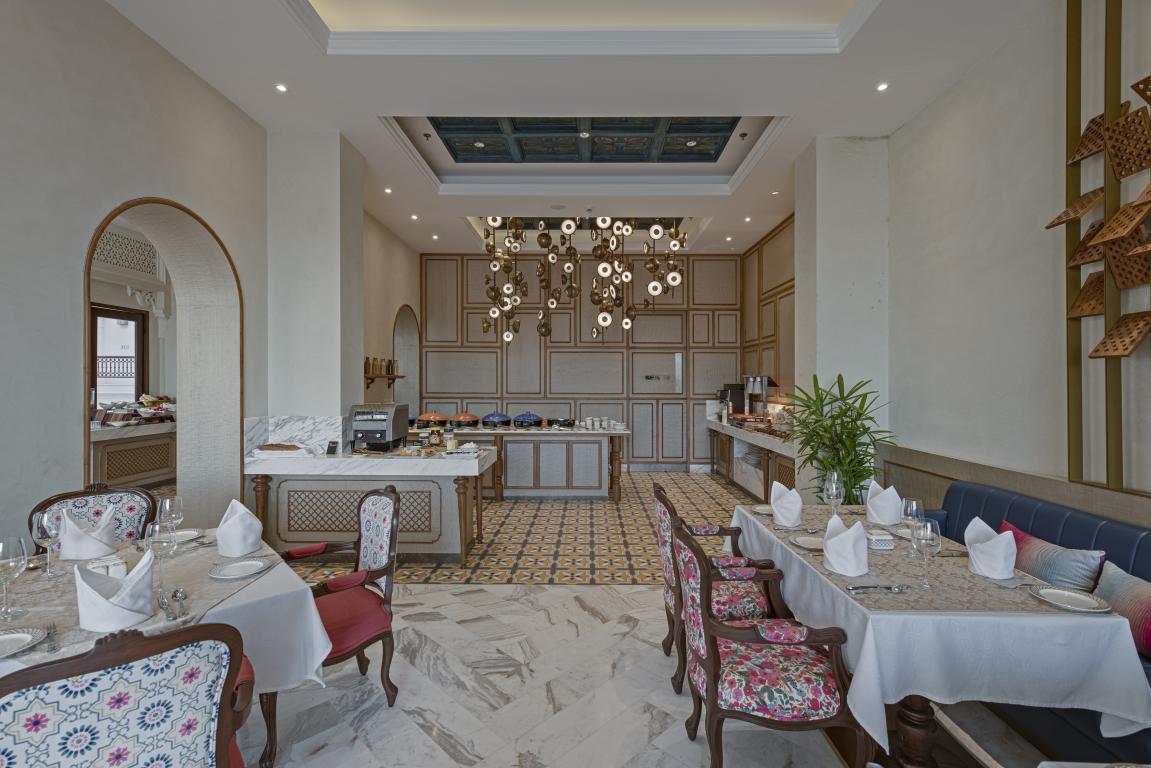
Entrance Features The Antique Blue of Neelkanth
The entryway symbolizes Dharma. The large entry doorway is recreated to be exemplary of the original doors coated in antique blue of Neelkanth.
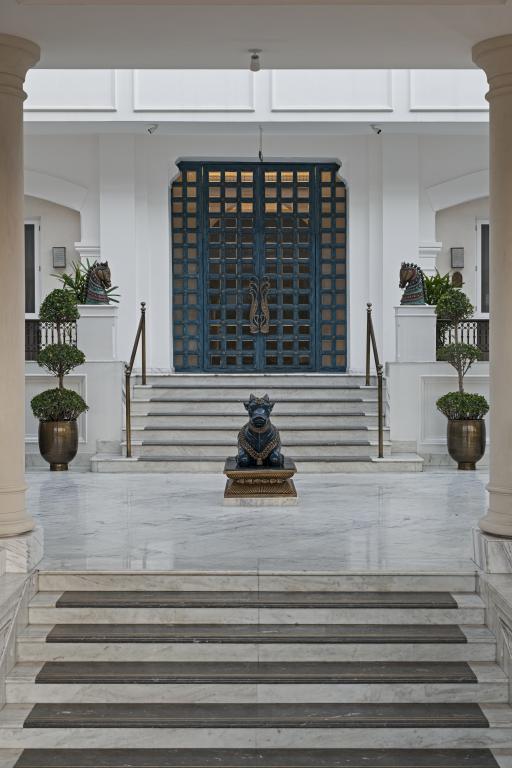
The colours of Ganga and Neelkanth were instilled, reflecting through the doors and windows. The entryway ensured the guests could feel the energy between the two doors, where the ancient artefacts carry the memory and history of the haveli.
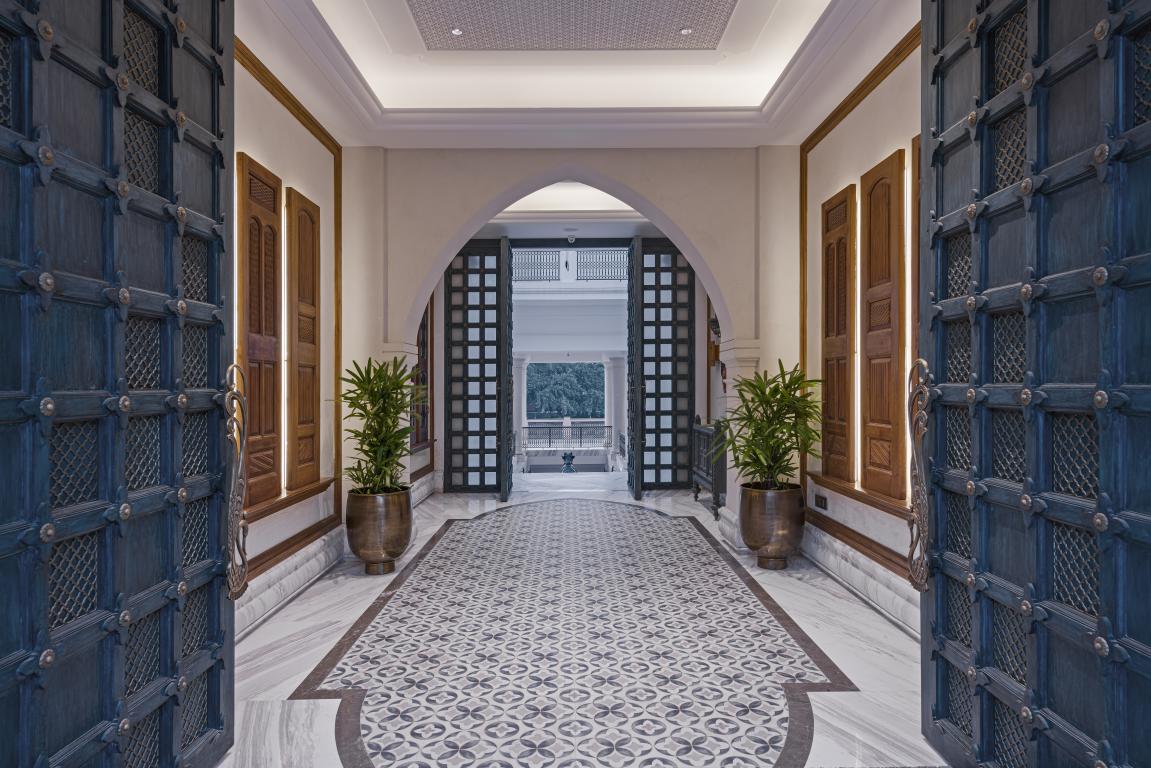
The courtyard becomes the next space that guests enter emphasising the relationship with Artha.
Courtyard: The Central Hub
The courtyard is the central hub of the hotel. It thus includes the lounge, lobby, reception area, & coffee shop. The courtyard provides an unobstructed view of the lounge and several rooms. Both the ceiling and flooring are adorned with intricate carvings.
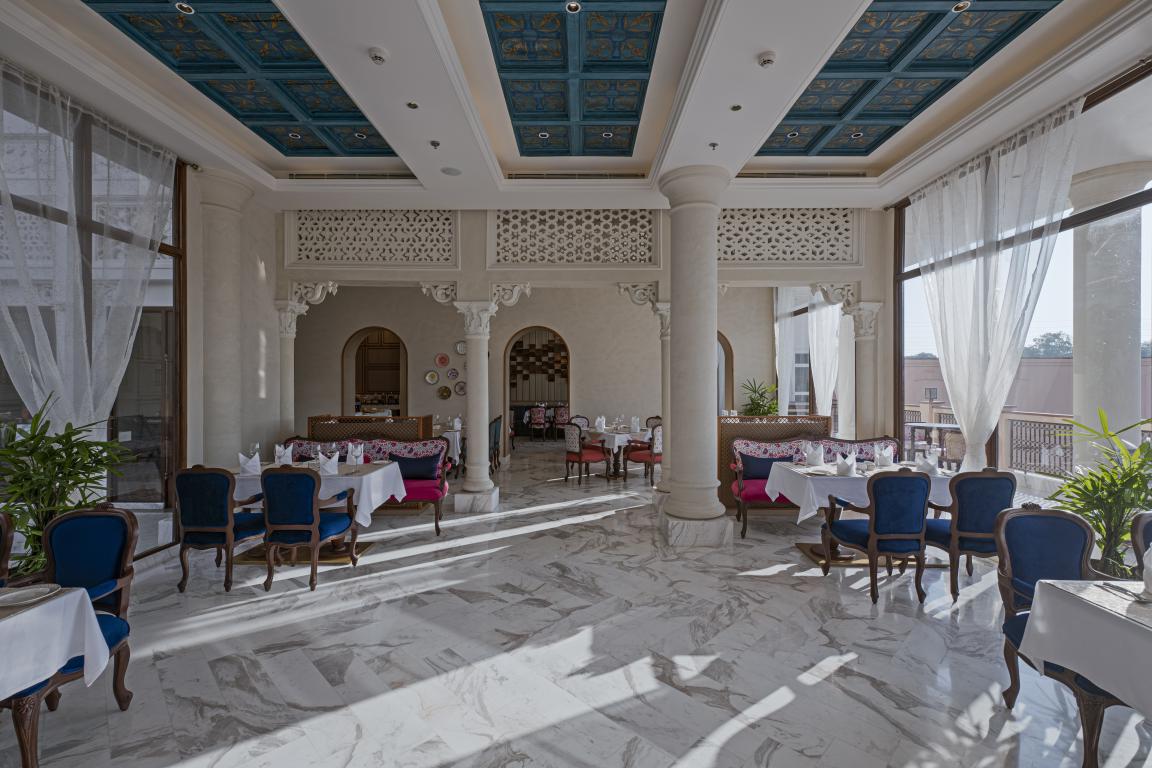
The view from this vestibule is unparalleled. The ripples of the coordinates can be seen in the design of the courtyard. The lounge is attached to the courtyard, which further leads to the holy river.
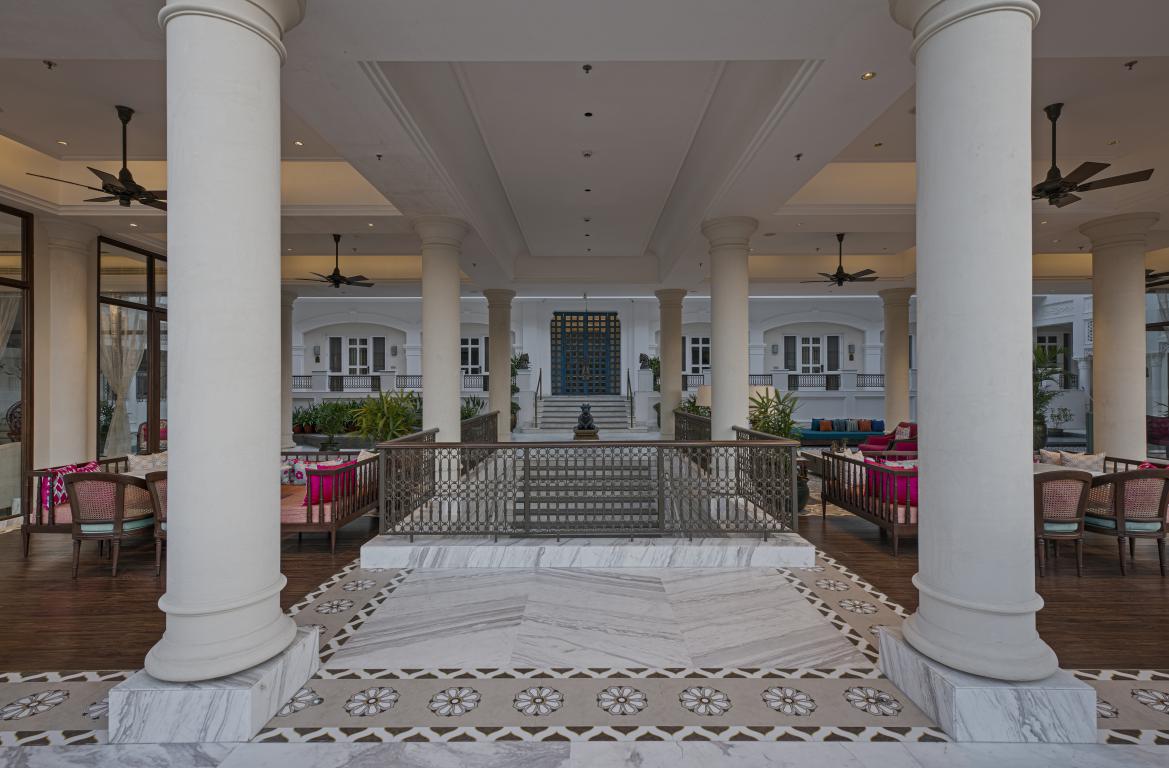
All the public areas are devised to denote the Kama. The Neel Kanth colour of the Nandi in the lounge and coffee shop reflects the presence of Lord Shiva and has also been symbolized throughout the main courtyard in a somber colour scheme. The bright colour palette used throughout depicts the city of Haridwar and its temple architectural heritage.
A Depiction of Bholenath in the Reception Area
The reception area is an illustration of the Bholenath, right from the backdrop. The colours of the furniture are an embodiment of the same.
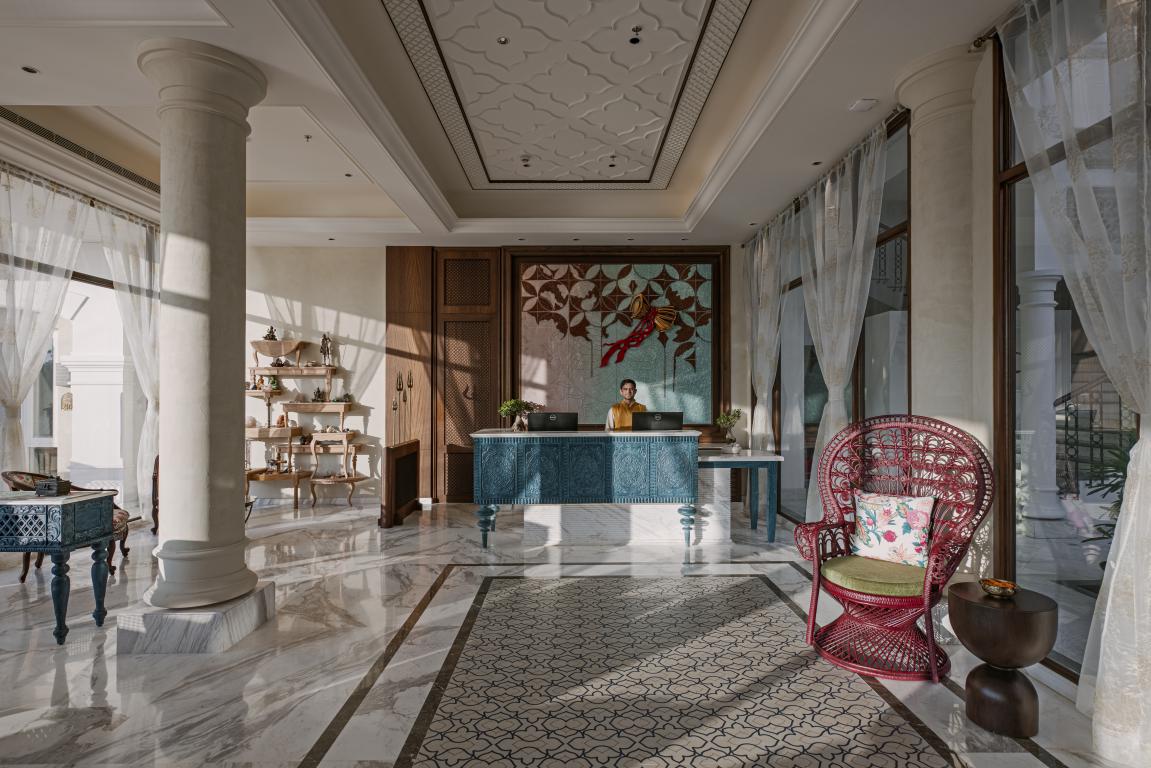
There are also notable depictions of the rudraksha instilled in the decor and styling. With a skunk, damrus & a welcome mantra chanted, all guests are ensured a celebratory welcome, adorned with a symbolic rudraksha mala, thus symbolizing birth.
Ample Sunlight and Natural Ventilation
The environment in this space is surreal. The natural ventilation in the lobby area is quite pleasant, engulfing the guest in a wonderful ambience.
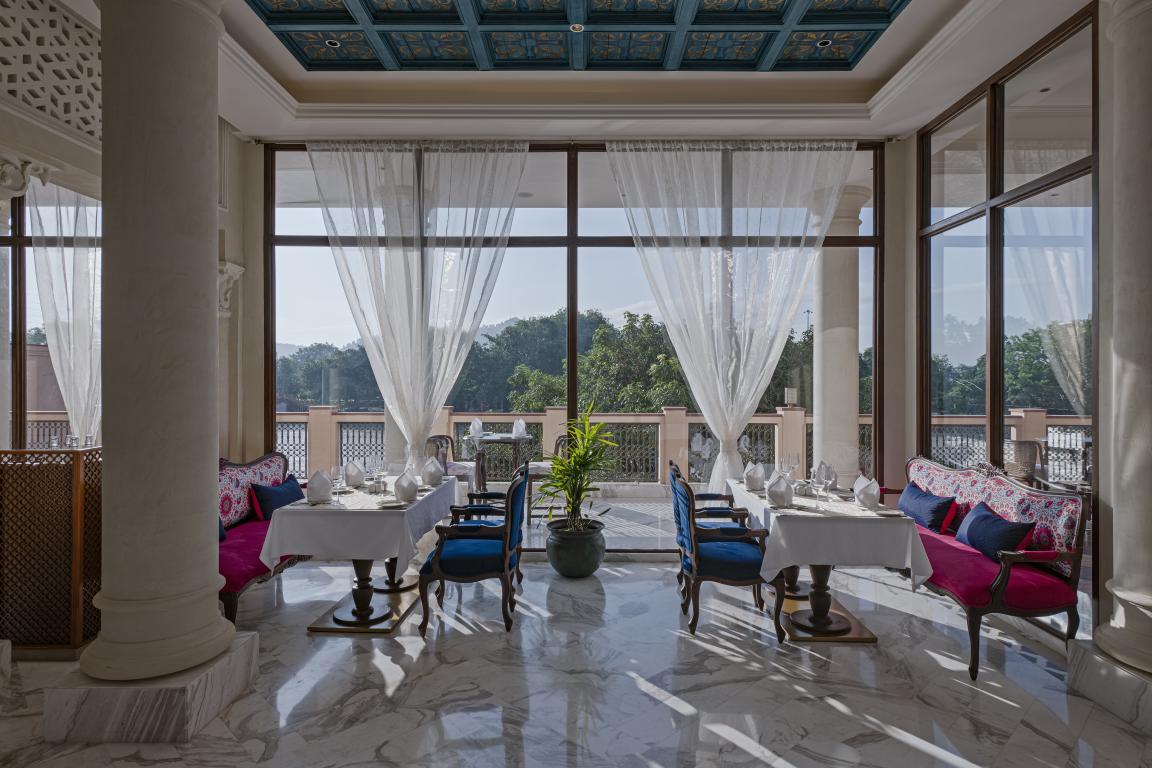
The ventilation is even adequate during summertime, making the lobby both comfortable and soothing.
Focus on Intricate Detailings
The ultimate destination is Moksha, i.e., liberation, which ensures happiness at the end of the journey of life. The overall property gives the guest an opportunity to comprehend the concept of Purusharth with the spiritual influences of Lord Shiva.
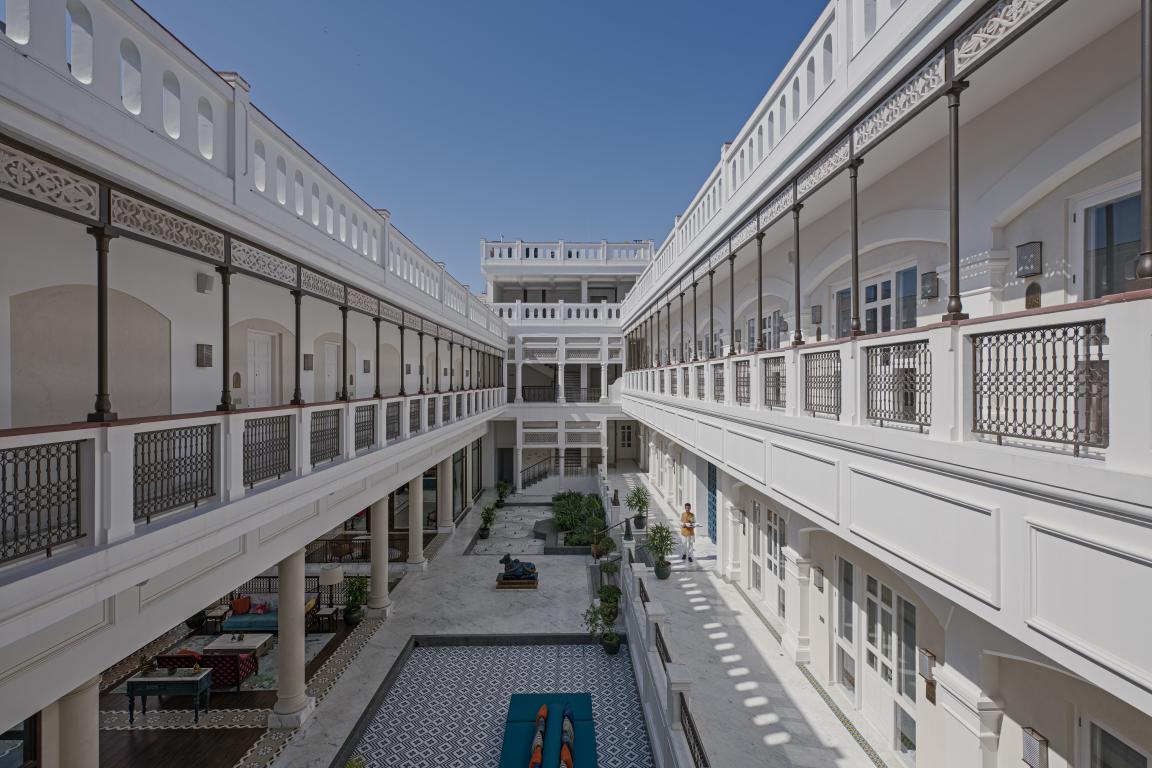 The ceremonial representation is done with small details keeping in mind the natural lighting and architectural elements used in the design. The 100-year-old mango tree has been retained, and a pool has been designed around it to showcase connectivity with Ganga. The River Lounge designed near the Ganga Ghat offers one a serene peace of mind and positive energy flow, being a favorite space of the Principal Architect.
The ceremonial representation is done with small details keeping in mind the natural lighting and architectural elements used in the design. The 100-year-old mango tree has been retained, and a pool has been designed around it to showcase connectivity with Ganga. The River Lounge designed near the Ganga Ghat offers one a serene peace of mind and positive energy flow, being a favorite space of the Principal Architect.
Also Read: Temple of Vedic Planetarium (TOVP): Architectural Details of The World’s Largest ISKCON Temple In Mayapur | West Bengal
Sustainable Architectural Practices
The biggest challenge faced in Haridwar was the rising level of air and water pollution. Sustainable architectural practices were employed for the treatment and control of air & water pollution. With the agenda of giving back to society, the hotel authorities are working around the maintenance of the Ganga Ghat and the vicinity surrounded by the property. It is being cleaned up to maintain a certain level of hygiene.
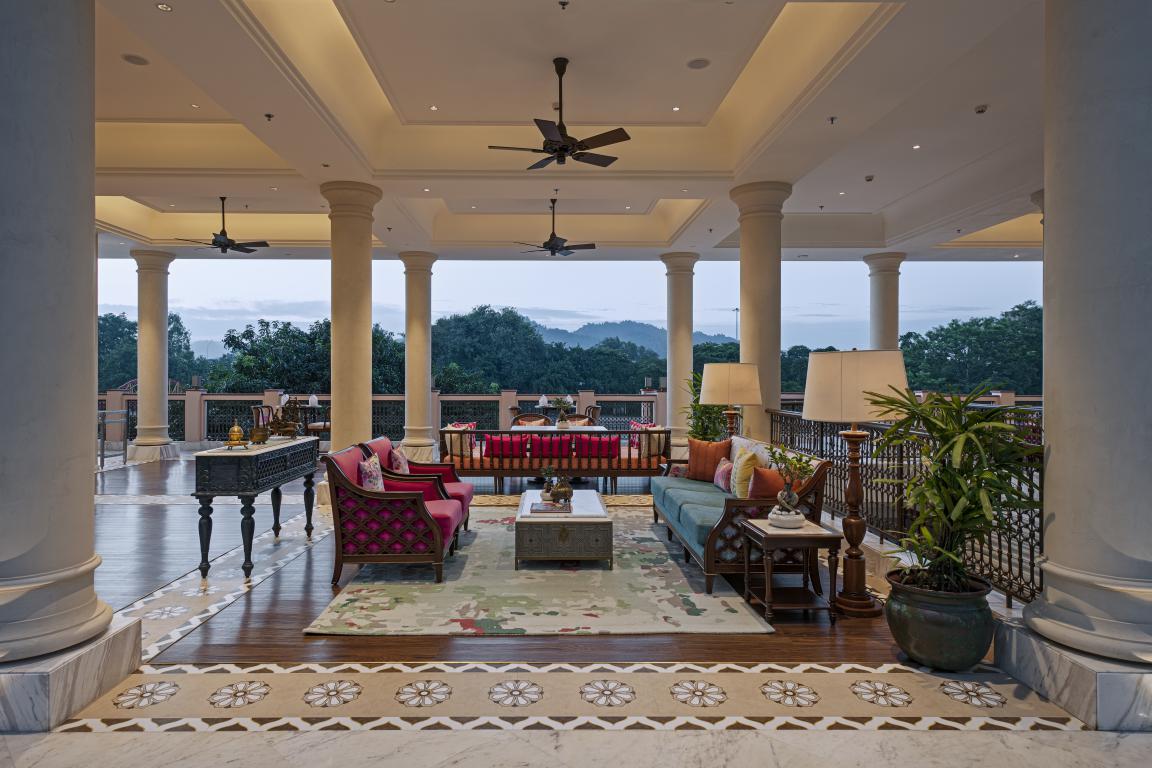
There is an active step taken towards preserving the architecture and the heritage of the Pilibhit Property along with the upkeep of the hotel street. Lost native cuisines and local art & culture are encouraged within the property, along with proper skill training being imparted to the trainees and the employed personnel at the hotel.
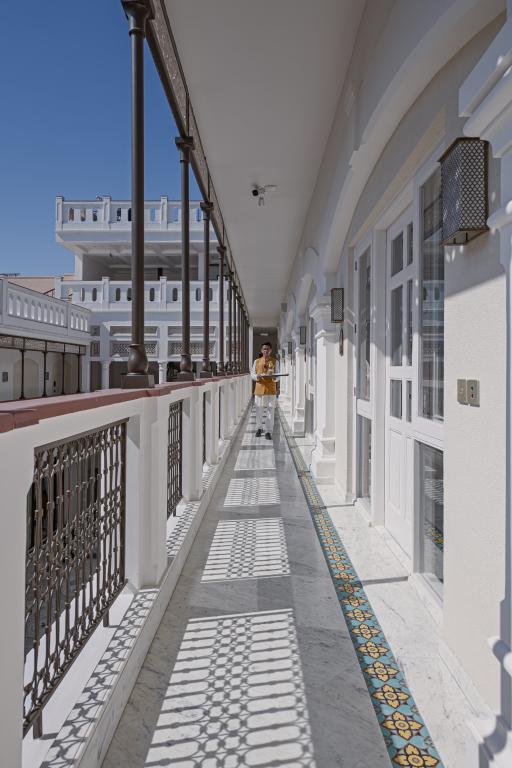
Season Inspires The Colour Scheme
As the Ganga’s changing colours through the season inspires the overall colour palette of the property, this influence can be seen both in the backdrop as well as the chandeliers.
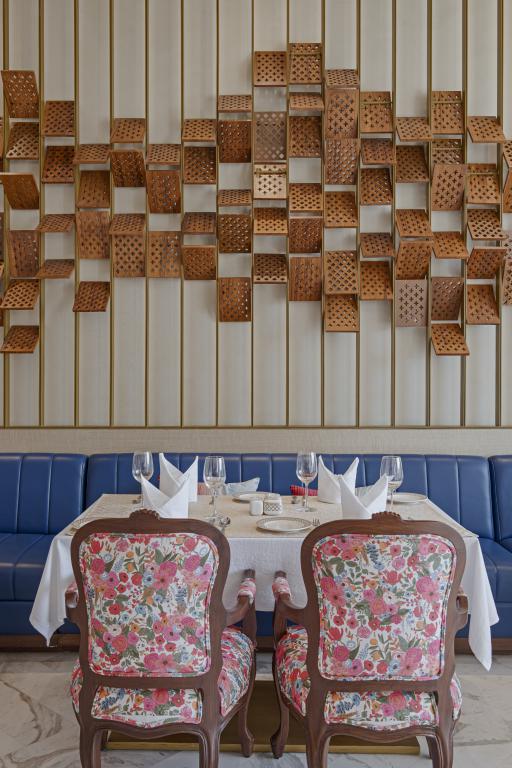
The soft furnishings further chosen are in accordance with the celebration of the holy river and the Haridwar temples. Indian motifs like rudraksha, Sadna, and the Marigold Flower portraying Haridwar have been contemporized through the rugs as well as other soft furnishings.
Serene and Surreal Ganga Lounge
The hotel property also includes a spa, which offers breathtaking views. The palatial hotel allows its guests to directly descend into the holy river to either watch the rituals performed or take the coveted Ganga snaan. The design also includes a Ganga lounge or the river room, where the environment is calm, peaceful, and surreal, making it the most optimal place to view the river from.
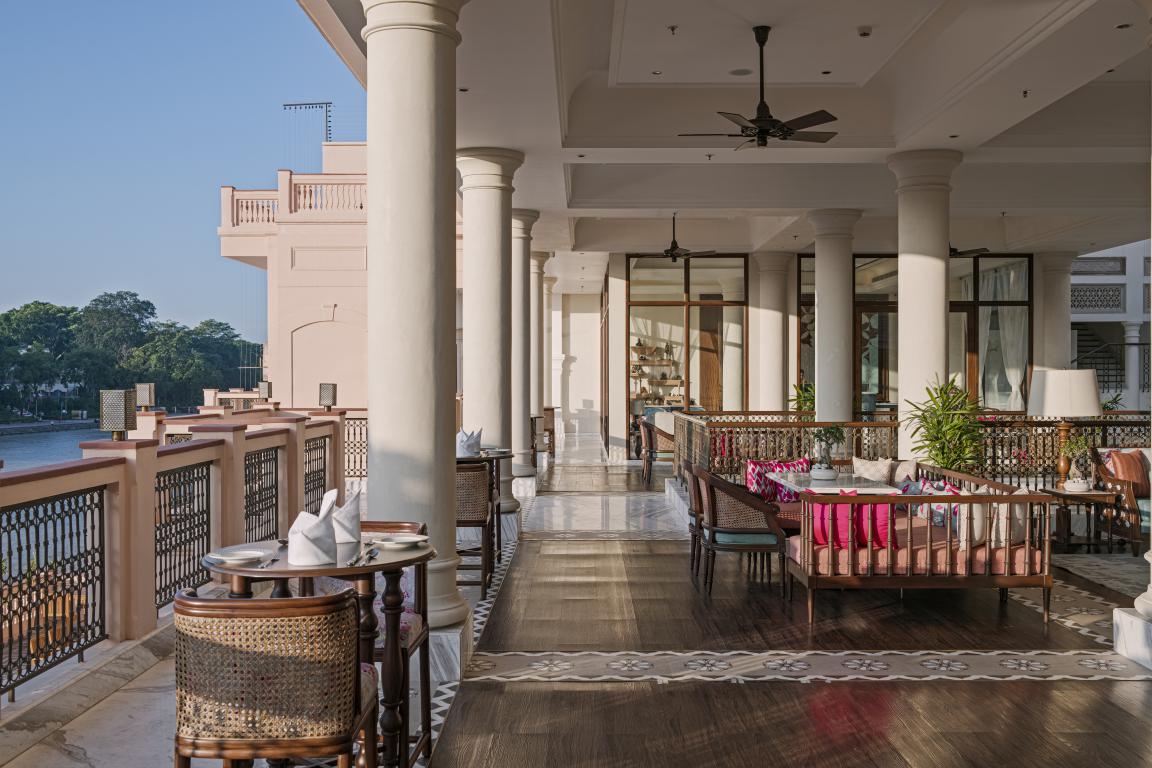
The Pilibhit House Hotel is a palatial experience of contemporary embedded in a boutique-inspired Haridwar experience. The design is an opulent representation of the city of Haridwar and the culture it represents. Pilibhit holds the accurate aura and the spiritual essence of the town in all parts of the design systematically carried with the implementation of sustainable practices and modern adaptation. Thus, Pilibhit House Hotel serves to be a perfect illustration of the past in the present.
Project Details
Name of the project: Pilibhit House, Haridwar - IHCL SeleQtions
Location: Haridwar
Area (Sq ft): 21000 sq ft
Completion Date: September 2021
Initiation date: June 2020
Budget: Confidential
About the Architect
Khozema Chitalwala, a prominent name in the architectural fraternity and beyond, has been a major driving force for several independent and collaborative projects across the globe. Having graduated from Rachna Sansad, Ar. Khozema Chitalwala started his career three decades ago with his first architectural project in the suburbs of Mumbai. He established his firm, Designers Group in 1988 with a dream & endeavour to institute ‘Designers Group’ as an internationally acclaimed design firm.

Keep reading SURFACES REPORTER for more such articles and stories.
Join us in SOCIAL MEDIA to stay updated
SR FACEBOOK | SR LINKEDIN | SR INSTAGRAM | SR YOUTUBE
Further, Subscribe to our magazine | Sign Up for the FREE Surfaces Reporter Magazine Newsletter
Also, check out Surfaces Reporter’s encouraging, exciting and educational WEBINARS here.
You may also like to read about:
Devi Ratn Hotel Blends Modern Palatial Grandeur With Jaipurs Rich Cultural Heritage | Designers Group
The Blend of Red Bricks and Steel Flooring System Gives An Exotic and Stylish Appeal To Co Dam Vegetarian Restaurant in Vietnam | Le house
A Sneak Peek of Spicewadi Restaurant As Ar Harshil Dhirawani Takes Us Through The Most Vital Elements of Restaurant Interior Design | Panvel
And more…